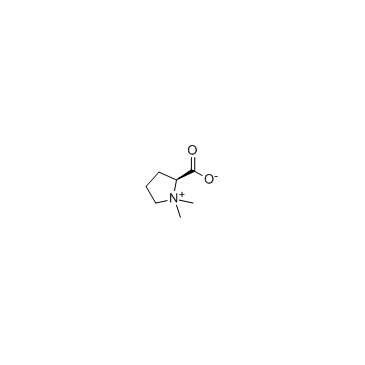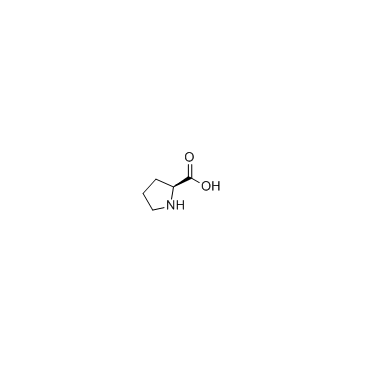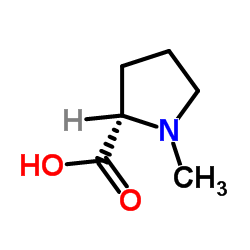| Description |
Stachydrine is a major constituent of Chinese herb leonurus heterophyllus sweet used to promote blood circulation and dispel blood stasis. Stachydrine can inhibit the NF-κB signal pathway.
|
| Related Catalog |
|
| Target |
p65
Human Endogenous Metabolite
|
| In Vitro |
Stachydrine can inhibit the NF-κB signal pathway, and this may be related to the mechanism of anti-hypertrophic. Intervention of stachydrine significantly suppresses the level of p-IκB protein in the cytosol and NF-κB protein in the nucleus [1]. Tissue factor mRNA is decreased in stachydrine-treated human umbilical vein endothelial cells. Stachydrine attenuates the decline of human umbilical vein endothelial cells viability and the increase of LDH activity induced by anoxia-reoxygenation[2]. A dose dependent decrease in expression of mRNA, and protein levels are observed in stachydrine-treated human prostate cancer cells (PC-3 and LNcaP)[3].
|
| In Vivo |
Stachydrine attenuates norepinephrine-induced cardiomyocyte hypertrophy and has potential protective effects against β-adrenergic receptor induced Ca2+ mishandling[4]. Stachydrine treatment reduces the expressions of PERK, CHOP, and caspase-3 in the endoplasmic reticulum stress-related apoptosis pathway[5].
|
| Cell Assay |
Cytotoxicity is determined by colorimetric MTT cleavage assay. Briefly, human umbilical vein endothelial cells (HUVECs) are plated in triplicate in 96-well culture plates, and treated with different final concentrations (0.01, 0.1, 1, 10, 100 μM) of stachydrine respectively for 24 hours. After incubation, culture media are discarded and new culture media containing 0.5mg/mL of MTT are added. The plates are further incubated at 37°C for 4 hours. After the incubation, culture media are discarded and 0.1 mL of dimethyl sulfoxide (DMSO) is added to each well to solubilize the formazine crystals. The absorbance (OD) is measured at 540 nm using a microplate reader[3].
|
| Animal Admin |
Rats: Ventricular myocytes from 1-day-old Wistar rats are isolated and cultured in DMEM/F12 with 1 μM norepinephrine in the presence or absence of 10 μM stachydrine for 72 h. Cardiomyocytes hypertrophy is evaluated by cell surface area, total protein/DNA content, β/α-MHC mRNA ratio. While calcium handling function is evaluated by Ca2+-transient amplitude and decay, SERCA2a activity and expression, PLN expression and phosphorylation. β1-adrenergic receptor system activation is evaluated by the content of cAMP and the activation of PKA[5].
|
| References |
[1]. Guo W, et al. Effect of Leonurus stachydrine on myocardial cell hypertrophy. Zhong Yao Cai. 2012 Jun;35(6):940-3. [2]. Yin J, et al. Stachydrine, a major constituent of the Chinese herb leonurus heterophyllus sweet, ameliorates human umbilical vein endothelial cells injury induced by anoxia-reoxygenation. Am J Chin Med. 2010;38(1):157-71. [3]. Rathee P, et al. In vitro anticancer activity of stachydrine isolated from Capparis decidua on prostate cancer cell lines. Nat Prod Res. 2012;26(18):1737-40. [4]. Zhang C, et al. Effects of stachydrine on norepinephrine-induced neonatal rat cardiac myocytes hypertrophy and intracellular calcium transients. BMC Complement Altern Med. 2014 Dec 8;14:474. [5]. Zhang C, et al. Effect of stachydrine on endoplasmic reticulum stress-induced apoptosis in rat kidney after unilateral ureteral obstruction. J Asian Nat Prod Res. 2013;15(4):373-81.
|

 CAS#:147-85-3
CAS#:147-85-3 CAS#:74-88-4
CAS#:74-88-4 CAS#:475-11-6
CAS#:475-11-6
